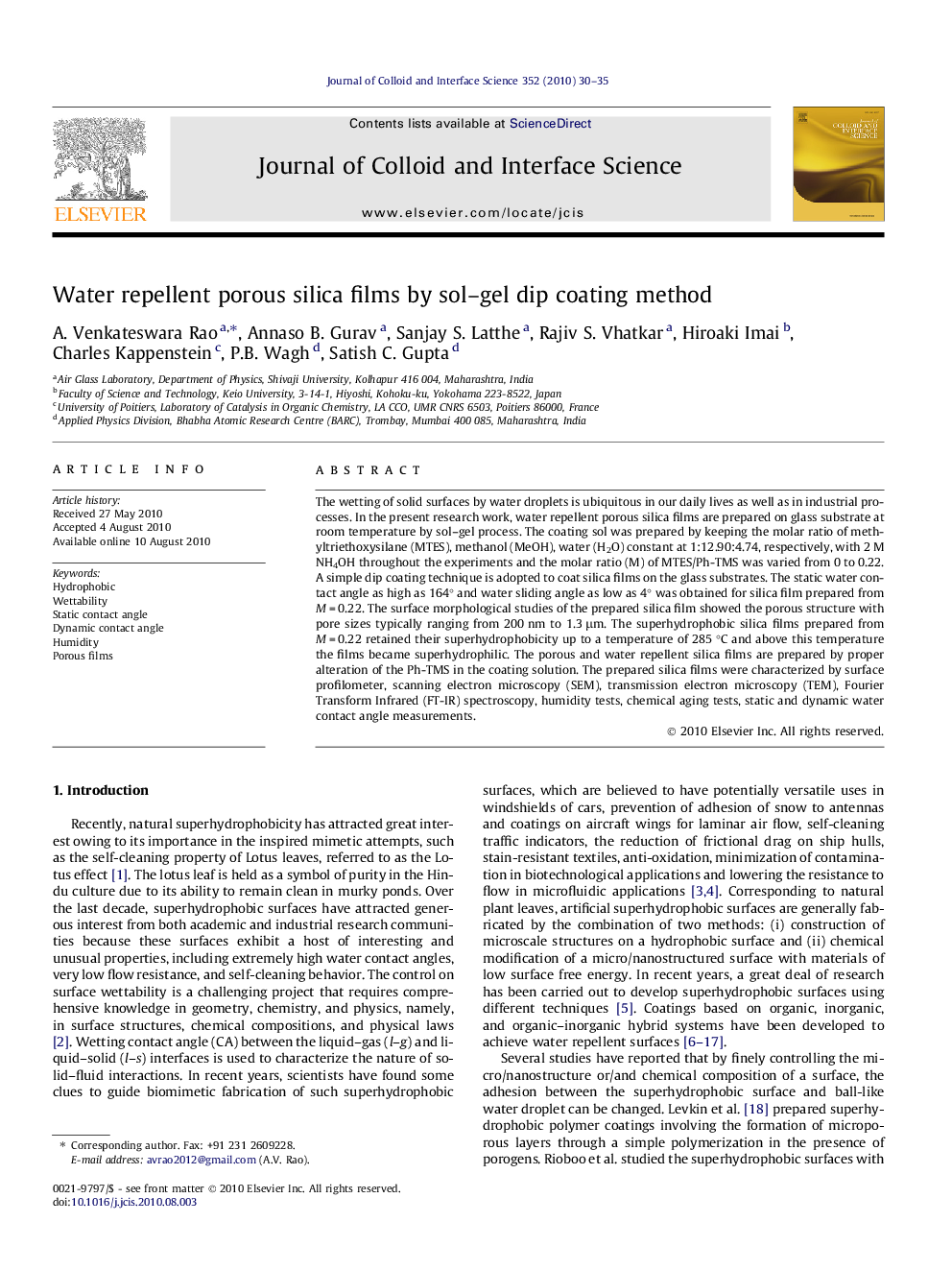| Article ID | Journal | Published Year | Pages | File Type |
|---|---|---|---|---|
| 609260 | Journal of Colloid and Interface Science | 2010 | 6 Pages |
The wetting of solid surfaces by water droplets is ubiquitous in our daily lives as well as in industrial processes. In the present research work, water repellent porous silica films are prepared on glass substrate at room temperature by sol–gel process. The coating sol was prepared by keeping the molar ratio of methyltriethoxysilane (MTES), methanol (MeOH), water (H2O) constant at 1:12.90:4.74, respectively, with 2 M NH4OH throughout the experiments and the molar ratio (M) of MTES/Ph-TMS was varied from 0 to 0.22. A simple dip coating technique is adopted to coat silica films on the glass substrates. The static water contact angle as high as 164° and water sliding angle as low as 4° was obtained for silica film prepared from M = 0.22. The surface morphological studies of the prepared silica film showed the porous structure with pore sizes typically ranging from 200 nm to 1.3 μm. The superhydrophobic silica films prepared from M = 0.22 retained their superhydrophobicity up to a temperature of 285 °C and above this temperature the films became superhydrophilic. The porous and water repellent silica films are prepared by proper alteration of the Ph-TMS in the coating solution. The prepared silica films were characterized by surface profilometer, scanning electron microscopy (SEM), transmission electron microscopy (TEM), Fourier Transform Infrared (FT-IR) spectroscopy, humidity tests, chemical aging tests, static and dynamic water contact angle measurements.
Graphical abstractThe microstructure of the Ph-TMS modified silica film shows the porous surface morphology with non-uniform pore sizes typically ranging from 200 nm to 1.3 μm.Figure optionsDownload full-size imageDownload high-quality image (145 K)Download as PowerPoint slideResearch highlights► The silica coatings with static water contact angle as high as 164° and water sliding angle as low as 4° were prepared by sol–gel process. ► The surface morphological studies of the silica coatings showed the porous structure with pore sizes ranging from 200 nm to 1.3 μm. ► The superhydrophobic silica films retained their superhydrophobicity up to a temperature of 285 °C and above this temperature the films became superhydrophilic.
